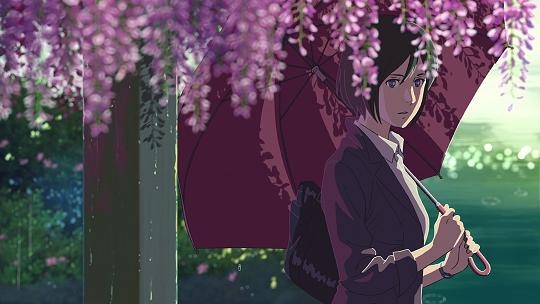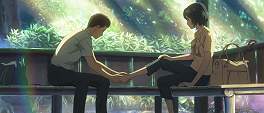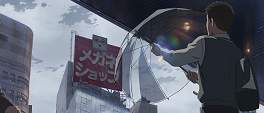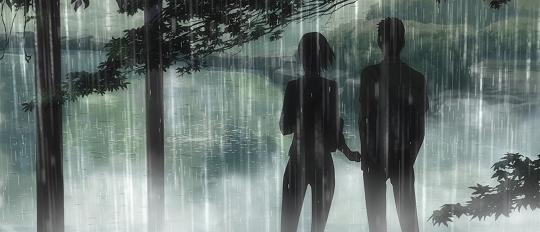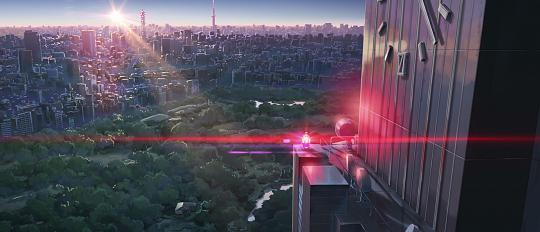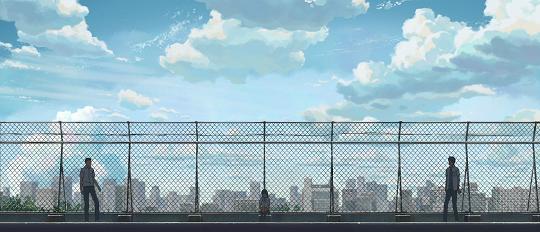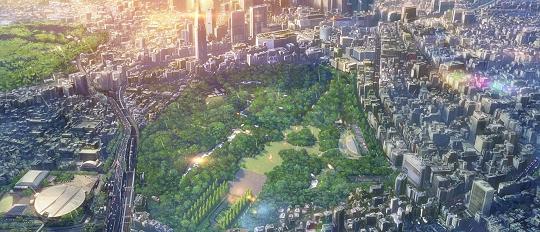“Hmmmm.” That was the noise I made as the post-credits scene in Makoto Shinkai’s Kotonoha no Niwa (Garden of Words) faded to black. It wasn’t so much a question or even a measure of concern but more a noncommittal sound that seemed to fit with the rather woolly way the petite forty five minute film ends. Ordinarily at the end of Shinkai film, even one as short as Dareka no Manazashi (Someone’s Gaze), there’s a satisfied silence, pregnant with the weight of the story just told and the characters just glimpsed.
A lot of the discomfort with the ending will likely come from what expectations you had going into it - in short whether you’re familiar with Shinkai’s films or not. Certainly you should take each work on its own merits, but the sharing of motifs and style and tone is enough to sink you back into the amber sunsets and cloudscapes first set out in Hoshi no Koe (Voices of a Distant Star).
Trains of course feature, not as prominent or as rife with drama as Five Centimeters per Second but weaving as they do into the background of Tokyo’s daily life. The juxtaposition between nature and civilisation is stark and lacks the natural ebb and flow of Hoshi wo Ou Kodomo (Children Who Chase Lost Voices / Journey to Agartha); here though the scenes in the verdant parks are peeked at through foliage and behind fronds, lending a kind of voyeuristic quality to the two main characters’ time together.
Their relationship buds and flourishes whenever it rains which in a sense plays as much of a character as the humans do. Pluviophiles rejoice for as much attention is lavished on the rain and its various effects as any of weather pattern before. Indeed the inversion of its usual meaning - melancholy and analogous to tears - is turned on its head here as you find yourself willing it to rain so the characters can meet again and find even a fleeting happiness. Or just to advance the story a little.
Up until the finale it’s difficult to dispute that this is a craftsman at work. Beauty is wrung from the mundane and pedestrian through detail both aesthetic and emotional. By far the highlight of the film is a scene so quietly and delicately erotic it brings a tingle to the skin just remembering it.
The ending then is where the problem lies and is the origin of that “hmmm”. Contrary to the story being told, meandering and flowing as it does with a mismatched pair finding their footing, it comes to an incongruous and explosive climax. The feeling that the plot was brought to an artificial conclusion simply to wrap up the film is never quite shaken despite the open endedness of it. Part of this lies in the lack of self-containedness of the two character’s plight. Violence and bullying bubble sinisterly under the surface while telegraphed plot threads continue to dangle.
Has Makoto Shinkai advanced his storytelling technique then or is there just more money for better visuals? Certainly the character designs are more refined than ever, losing the kind of lopsided angularity that typified his designs up to Hoshi wo Ou Kodomo. But that film demonstrates that complex and enthralling storytelling is well within his capability as a directory and a writer, and beyond the usual fallback themes of loss and love underpinned by an existential ache for nostalgia yet to come.
Don’t misunderstand then, Kotonoha no Niwa is still a phenomenal film and standing alone would be enough to herald a master in residence. By comparison though this falls short of any number of Makoto Shinkai’s prior films. Portraying two people’s worlds in forty five minutes is no mean feat and it is with the greatest of respect that I thought of Haruki Murakami’s short stories as I watched this but there is perhaps too much effort brought to provide a culmination to the indulgently languid build up.
